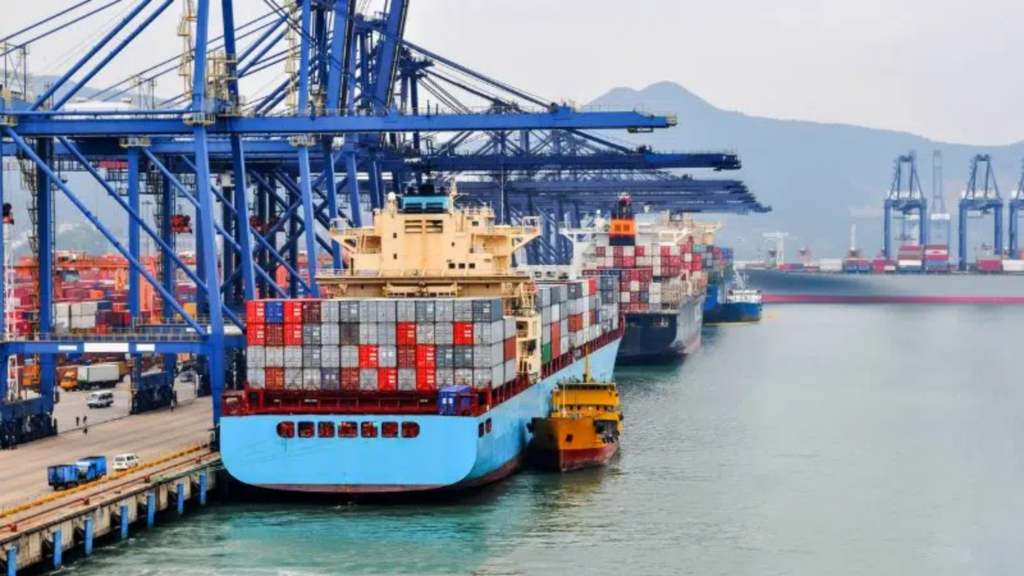Introduction: The Gateway to Trade
Defense ports are among the most secure facilities in any nation, safeguarded by elite forces and advanced surveillance. Yet commercial ports, which channel billions of dollars’ worth of cargo and serve as gateways for global trade, require no less vigilance. Spread across vast areas, these ports are vulnerable to theft, smuggling, cyberattacks, and even terrorism. Their security management is therefore integral to both national safety and the smooth functioning of international supply chains.

Port Security: Scope and Threats
Port security is a critical subset of maritime security. While it begins with controlling risks inside the port premises, its reach often extends to coastal waters. Common issues include trespassing, theft, pilferage from warehouses, smuggling, sabotage, and human or drug trafficking.
Modern challenges have added new dimensions:
- Cyber threats, where hackers use malware or phishing to disrupt digital infrastructure.
- Vandalism and sabotage, jeopardizing equipment and stored goods.
- Terrorism and organized crime, exploiting the sheer scale and complexity of ports.
Such risks make it imperative for port authorities to deploy both physical and digital defenses.
Customs and Immigration: First Lines of Defense
Customs Departments
Customs agencies are responsible for enforcing tariffs, preventing contraband, and blocking illegal trade. The World Customs Organization (WCO) provides global standards through its SAFE Framework, guiding member states on security procedures. Customs staff work to prevent drug trafficking, human smuggling, and violations of import-export laws.
Immigration Authorities
Immigration plays a parallel role in port security by monitoring the entry and exit of foreign nationals, issuing permits, and screening passengers. These controls are critical to preventing illegal migration, terrorism, and cross-border trafficking.
Technology and Surveillance in Modern Ports
Modern seaports employ advanced technology to monitor vast spaces and complex cargo operations. Tools include:
- Biometric scanners for access control.
- Robots to neutralize hazardous situations.
- Sensors, radar, and sonar for tracking movement and detecting underwater threats.
- Uncrewed patrol crafts to secure waterways.
Such technologies enhance the reach of security forces, supplementing physical patrols by security personnel and Coast Guard units.
Cybersecurity: The Digital Battleground
Cyberattacks are among the gravest risks to ports. Hackers can alter storage conditions for hazardous cargo, corrupt data, or cripple operations entirely. To counter this, ports employ:
- Firewalls and antivirus systems.
- Malware detection and removal tools.
- Air-gapped networks for critical infrastructure.
Cyber defense is no longer optional—it is essential for safeguarding not just data, but lives and the environment.
Handling Hazardous Cargo and Environmental Safety
Ports often deal with dangerous goods subject to the International Maritime Dangerous Goods (IMDG) Code. Security teams must ensure proper classification, storage, and handling to prevent fire, explosion, or contamination. Dedicated safety divisions monitor these risks.
Environmental protection is also a priority. Oil spills, gas leaks, and chemical discharges can devastate ecosystems and threaten communities near ports. Security protocols therefore extend to pollution control, accident response, and safe docking procedures, with harbor pilots guiding vessels into port safely.
Public and Private Roles in Port Security
While many nations assign port security to state forces and coast guards, some now outsource elements to private security companies. Regardless of the model, coordination among customs, immigration, coast guards, and port operators remains essential.
Conclusion: Securing the Lifelines of Trade
Commercial ports are more than logistical hubs—they are lifelines of the global economy. Ensuring their safety requires layered protection: customs enforcement, immigration controls, surveillance technologies, cybersecurity systems, and hazardous cargo protocols. As trade volumes grow and threats become more complex, security management will remain at the forefront of maritime law and global commerce.